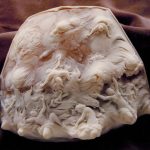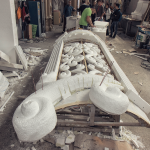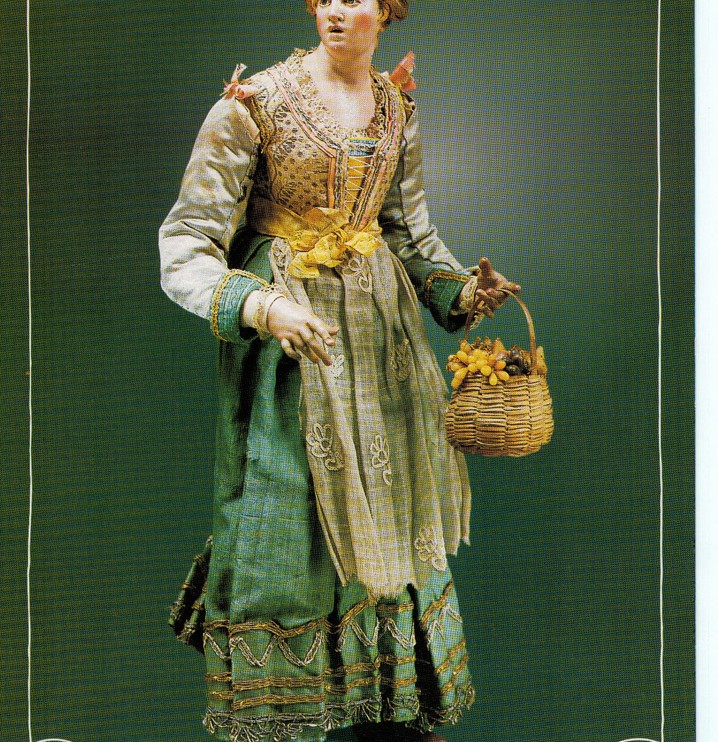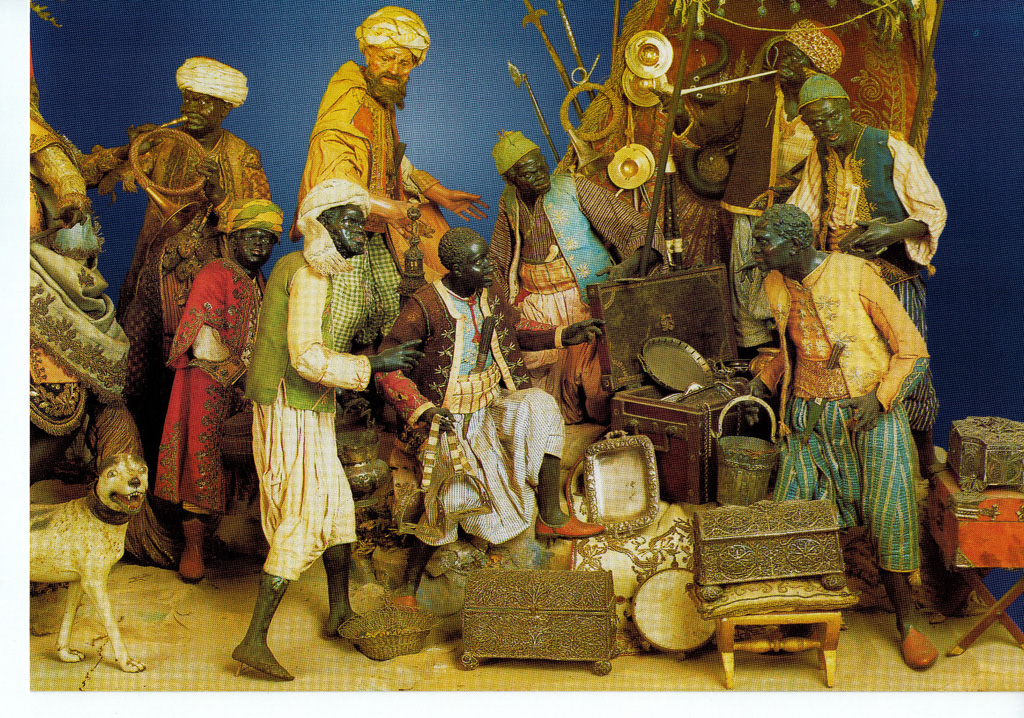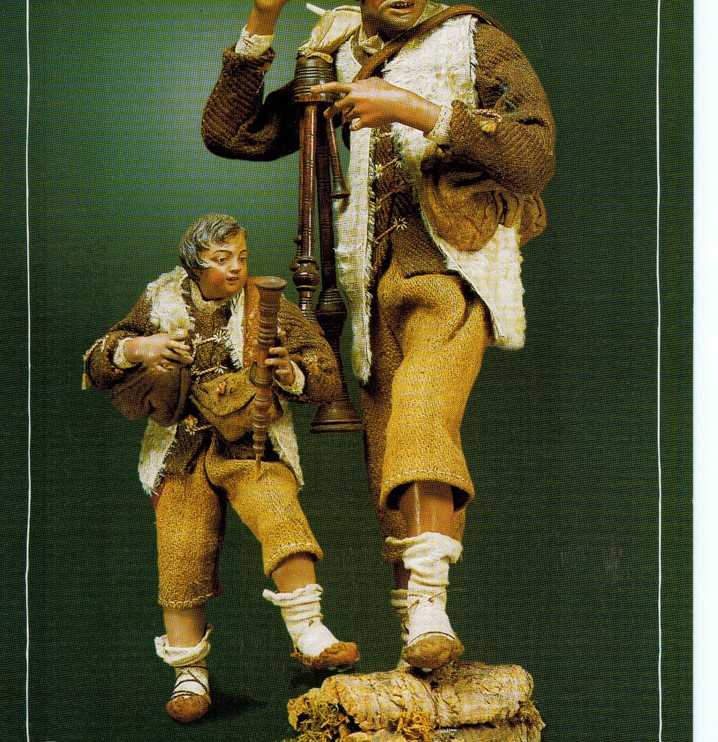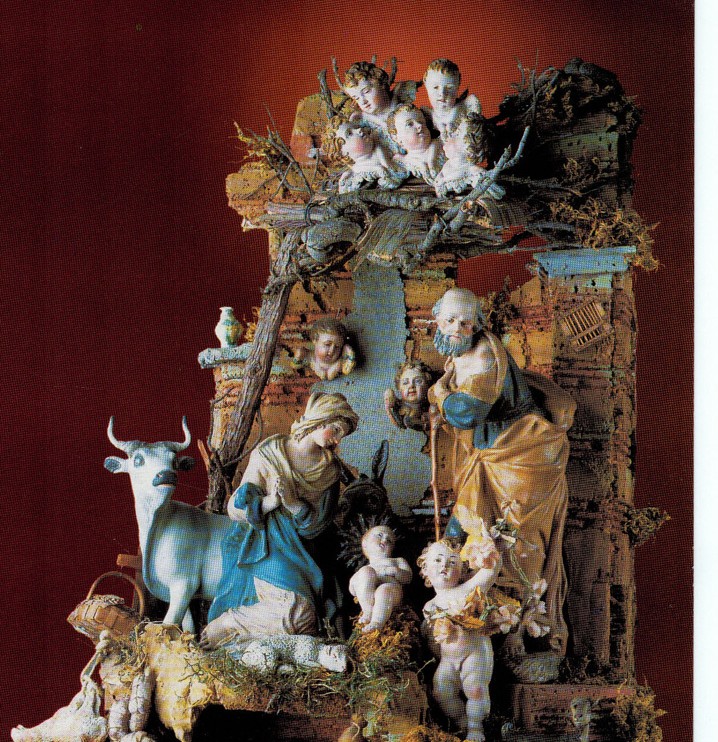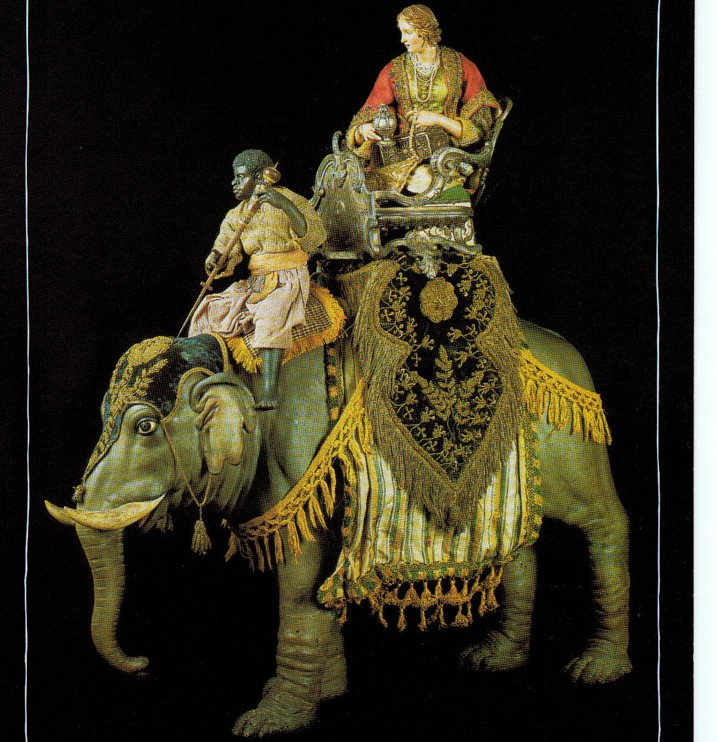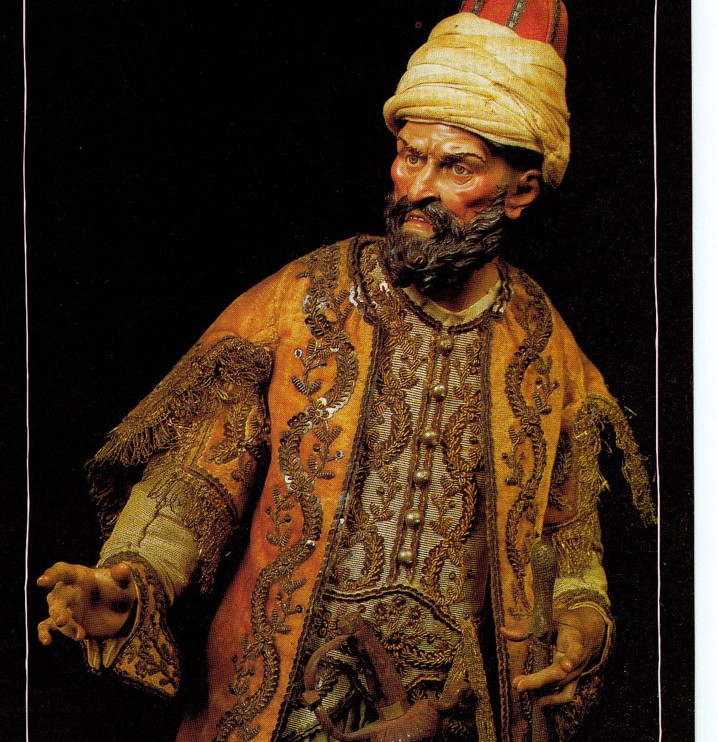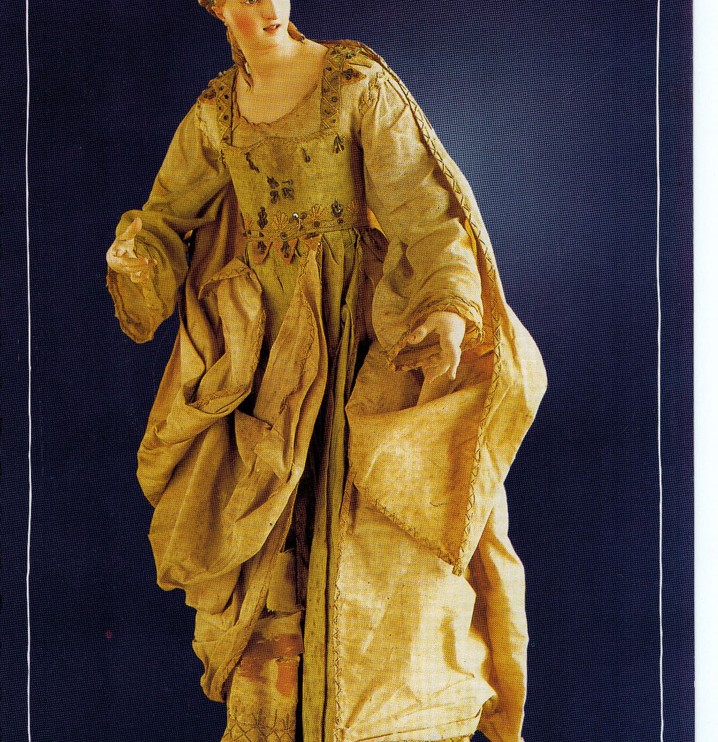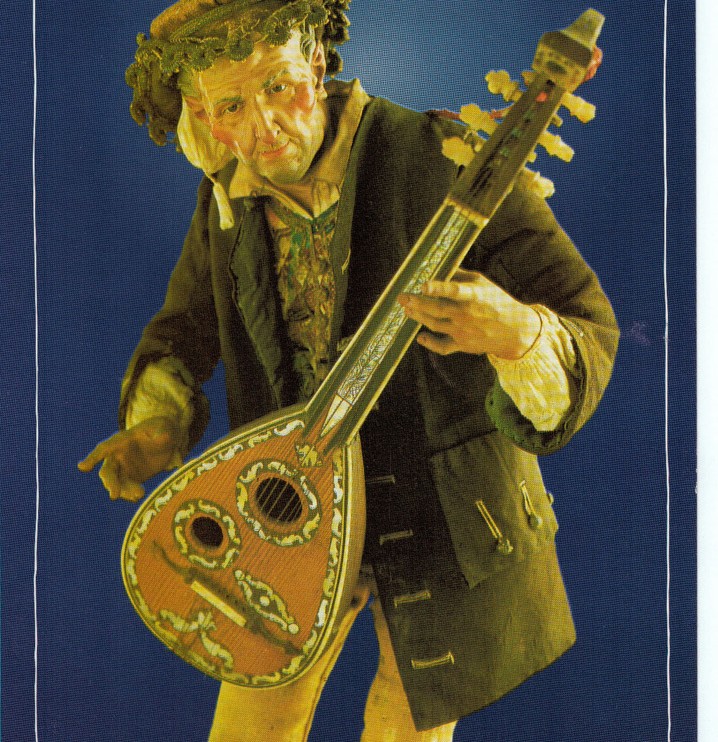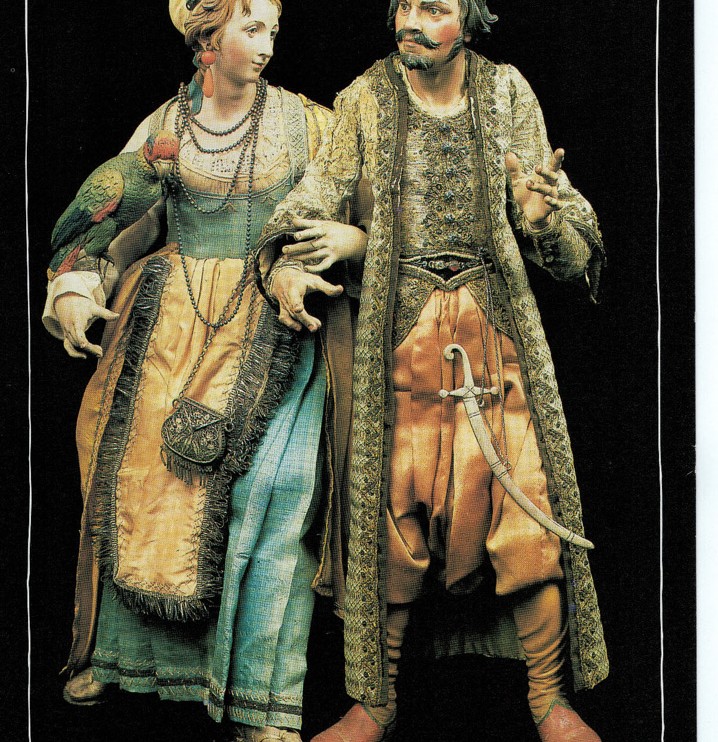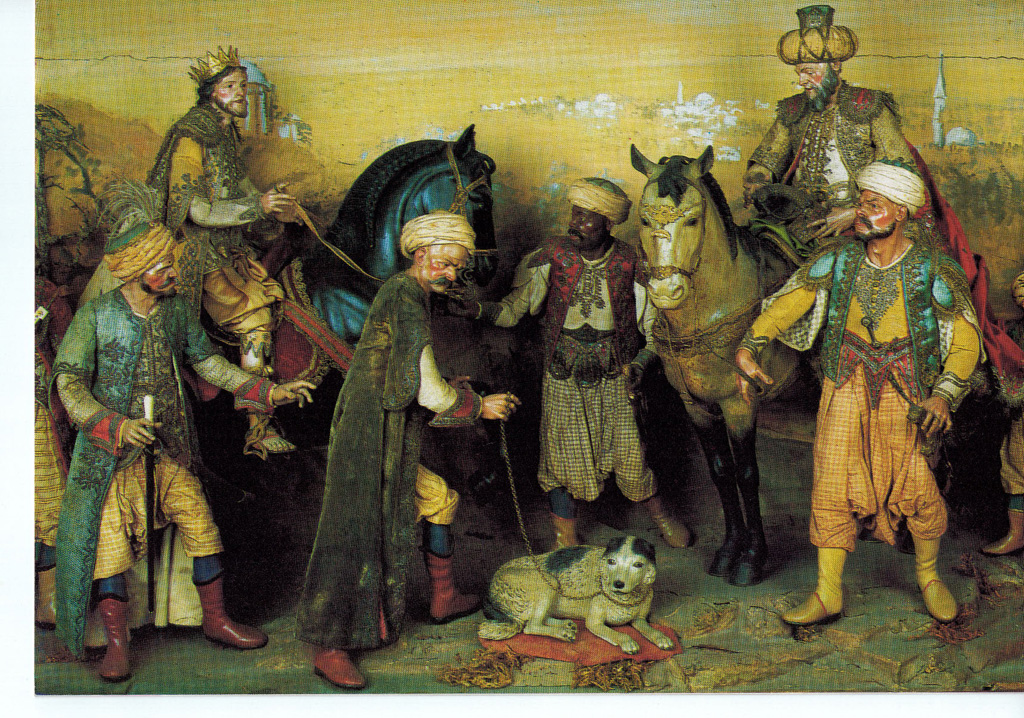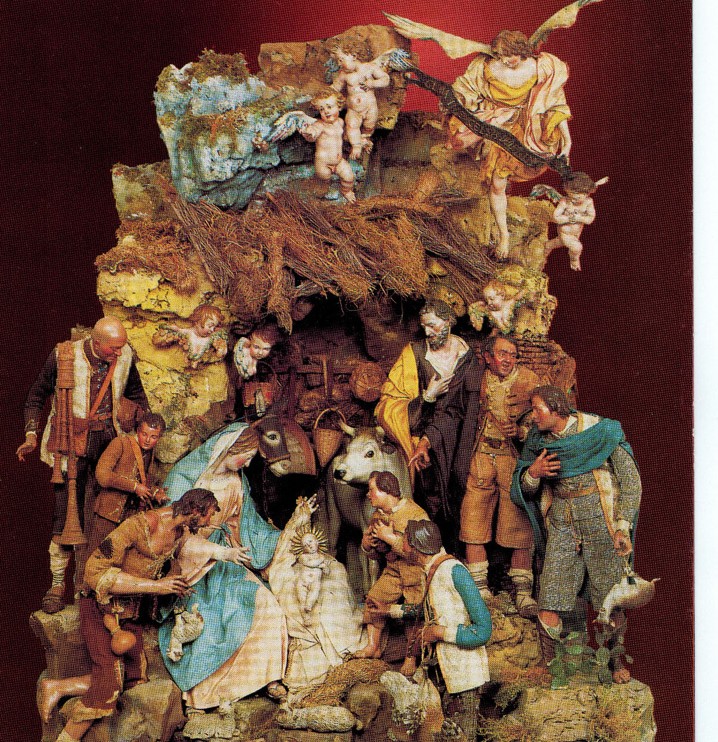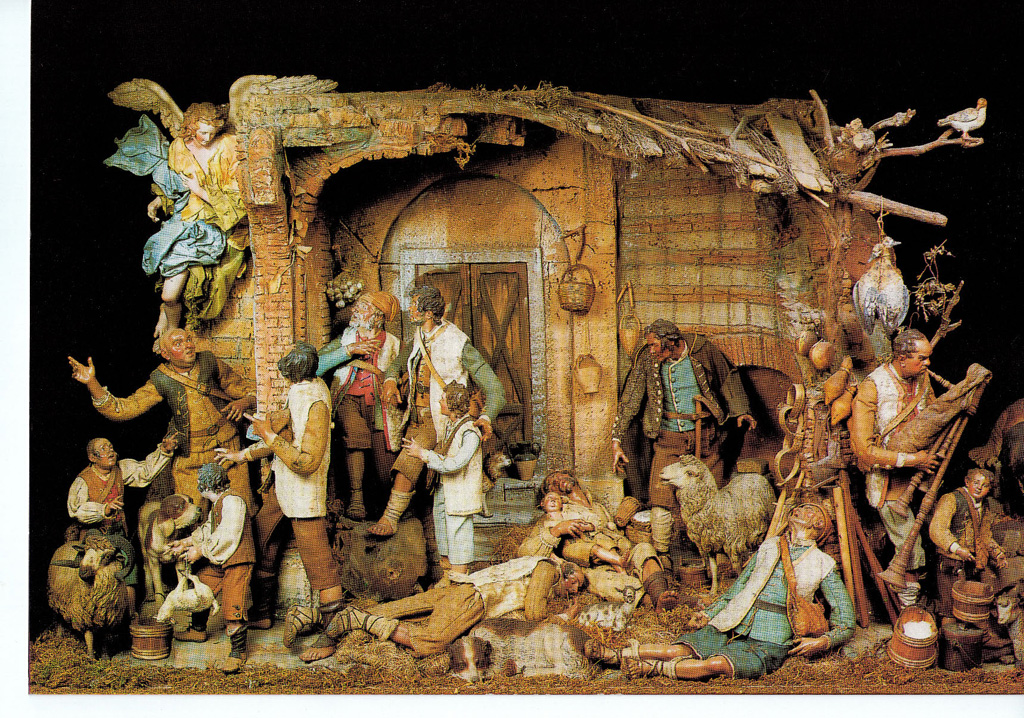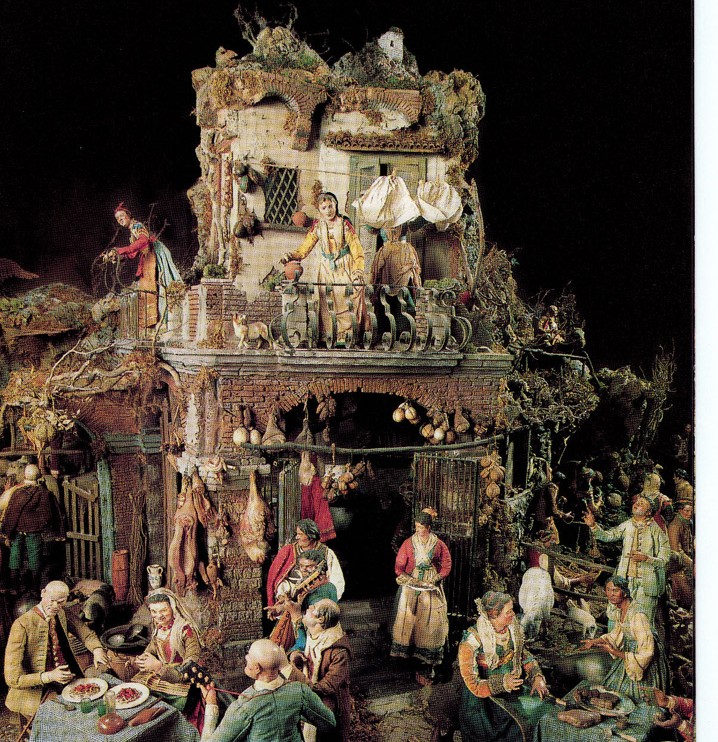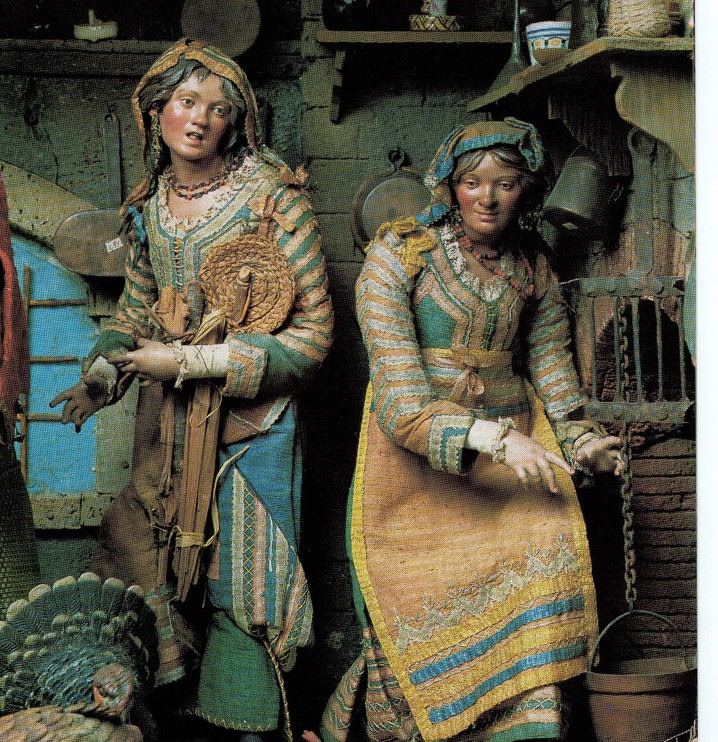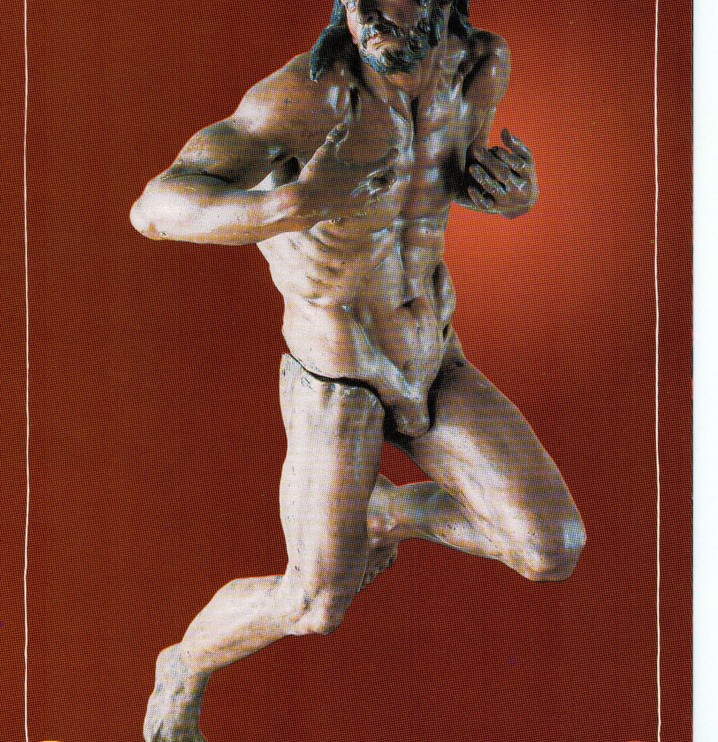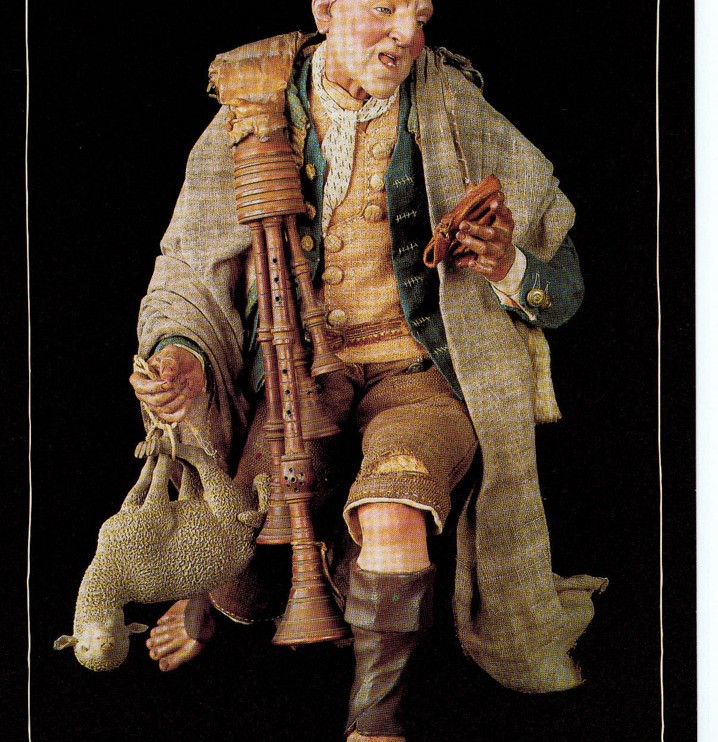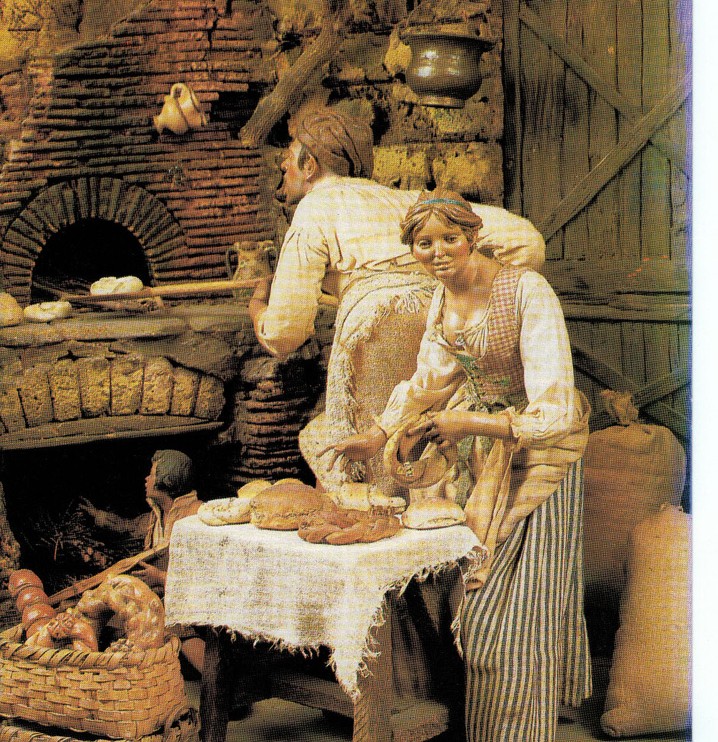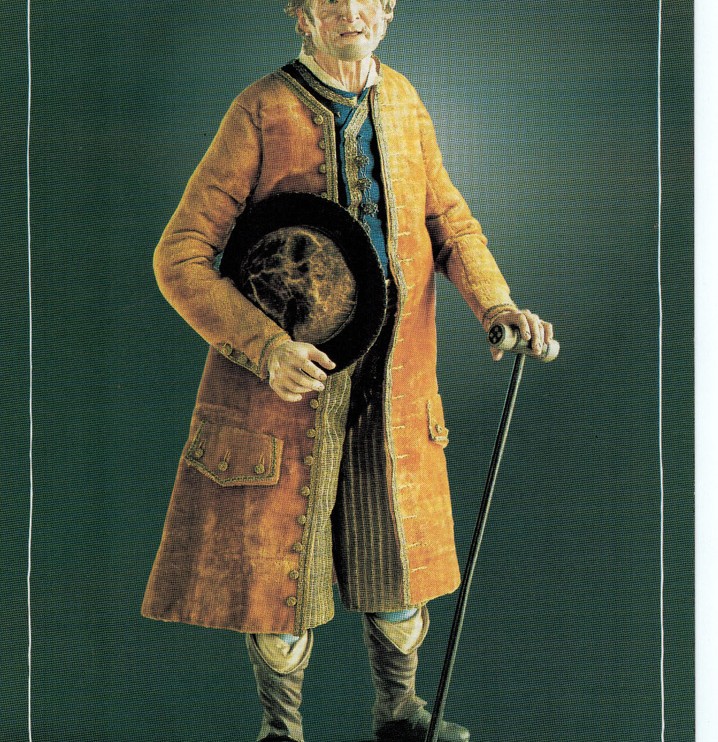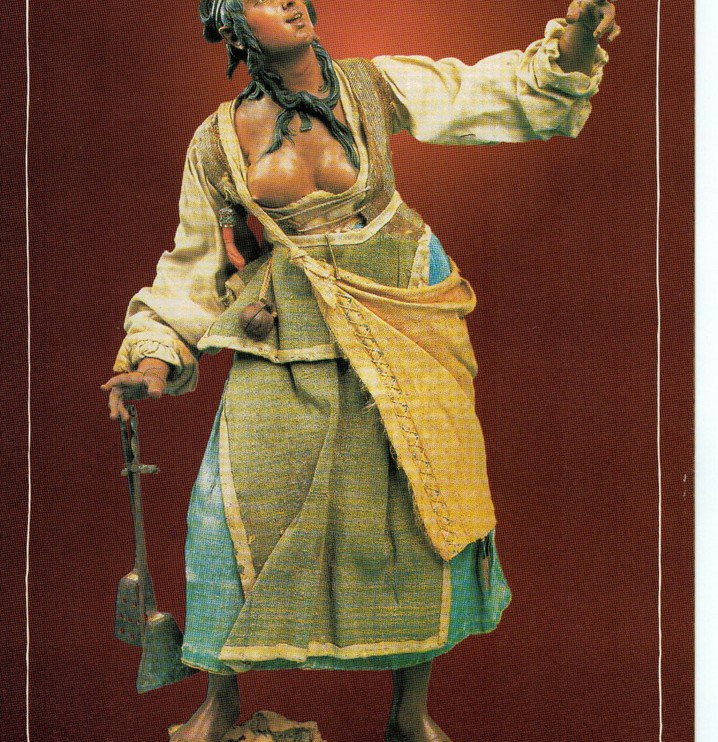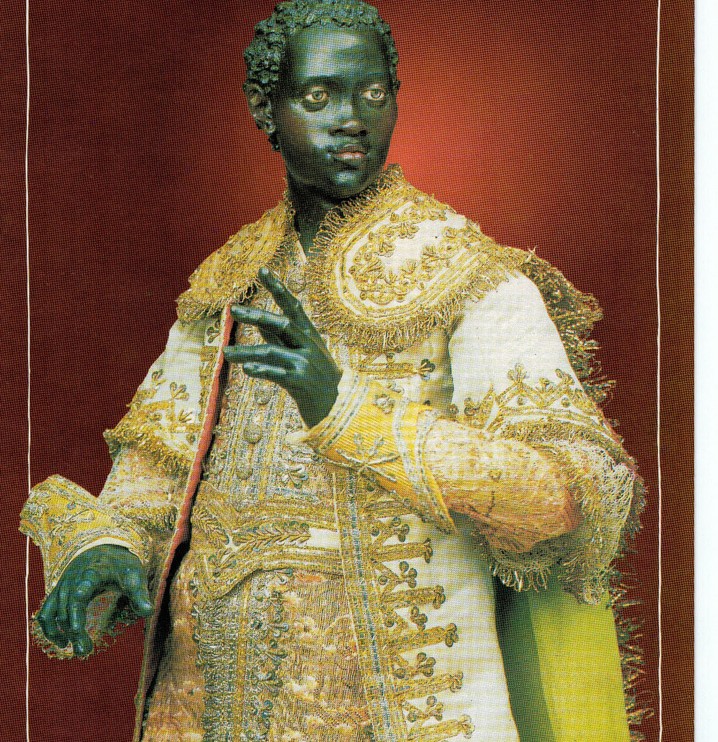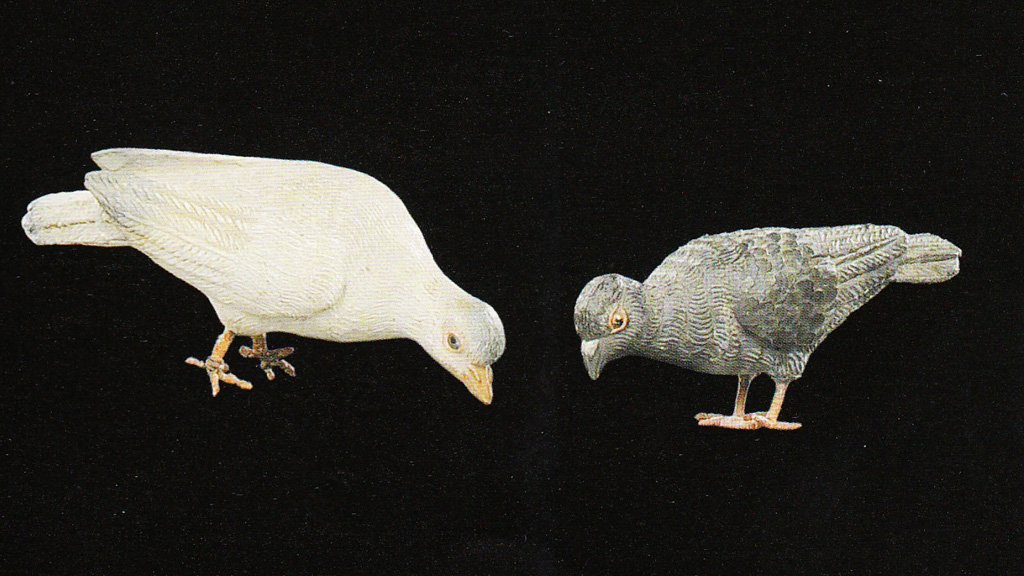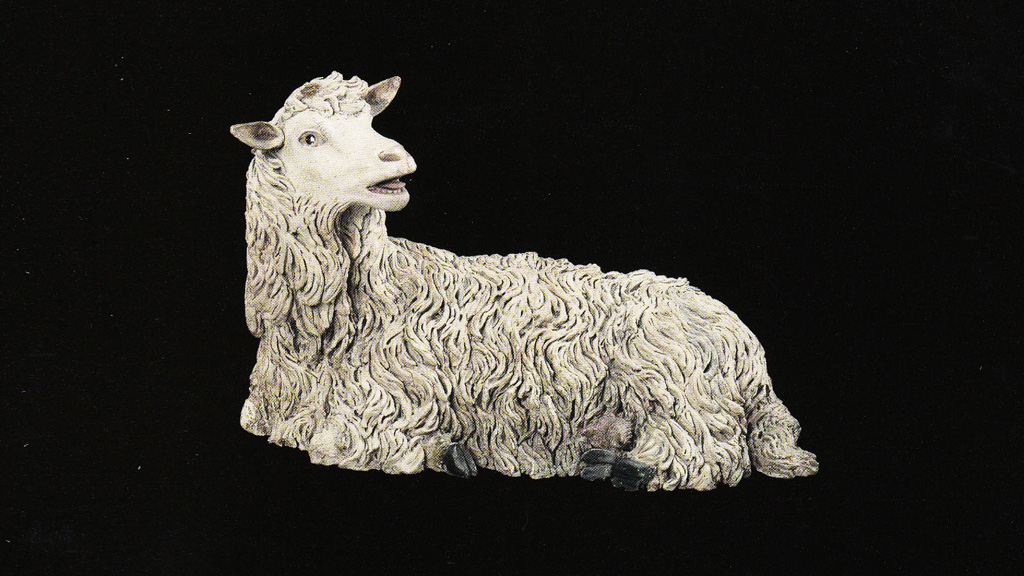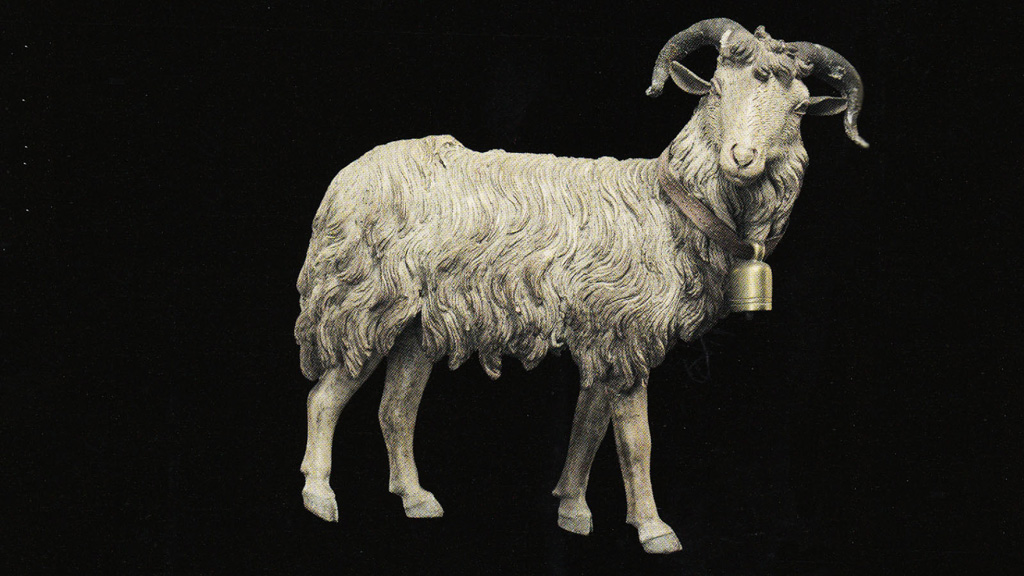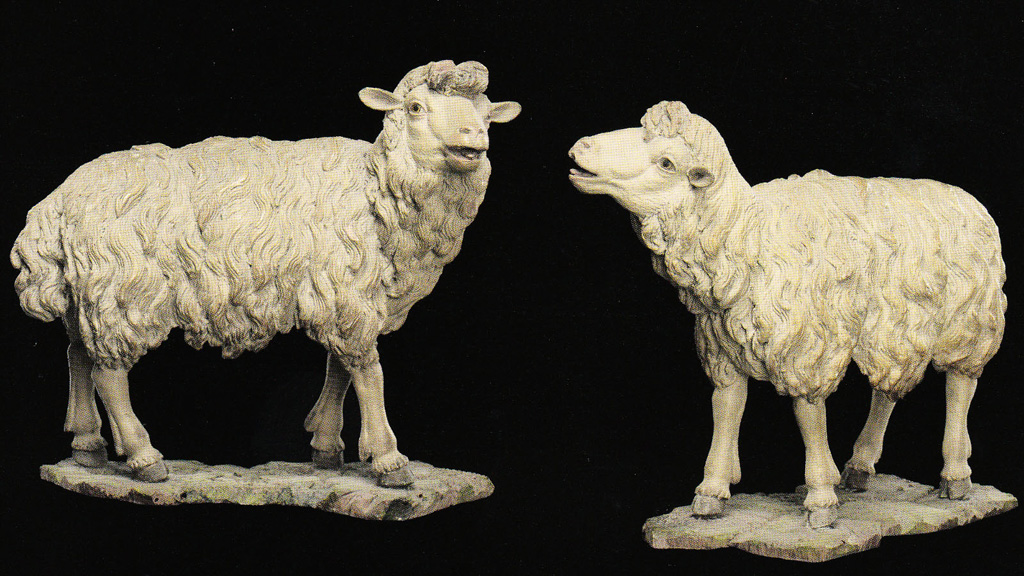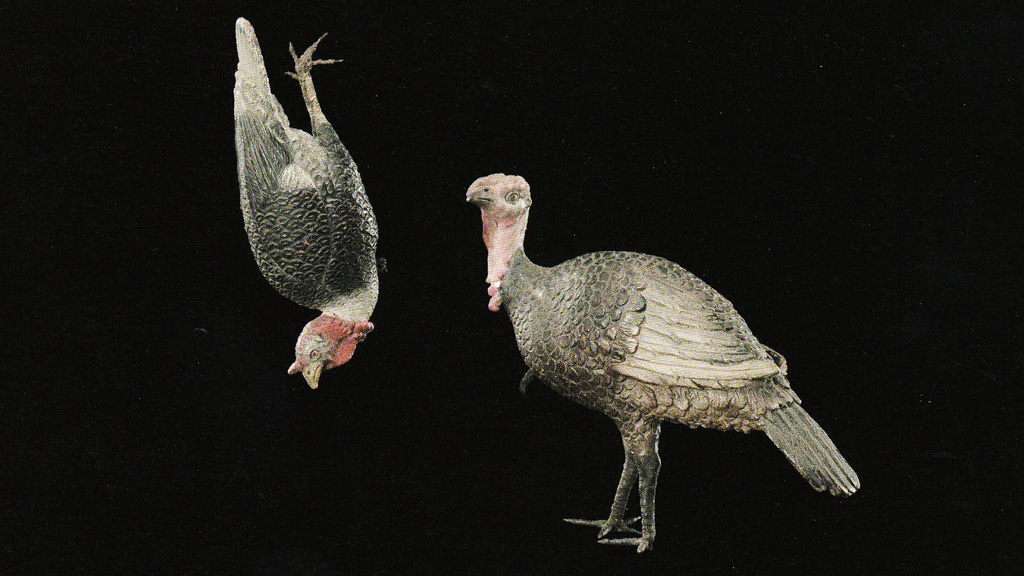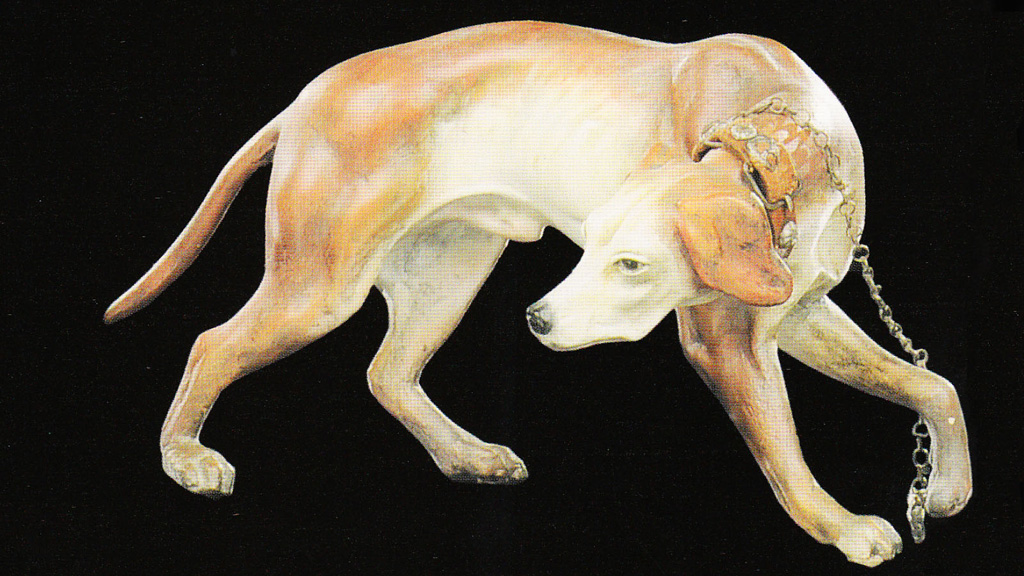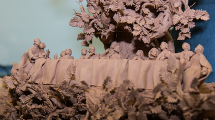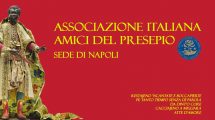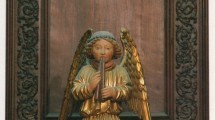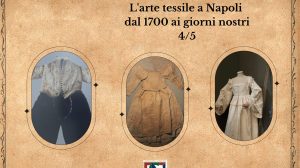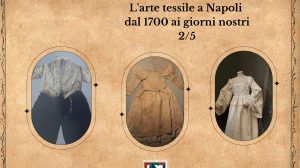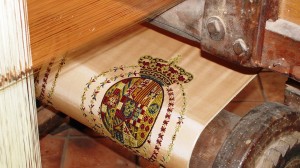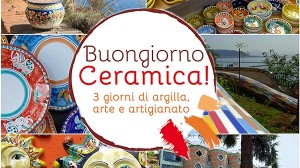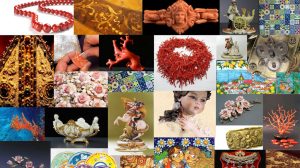“She had entered the workshop of Peppino Ascione, her cousin who manufactured the Saints. The shop was small, and the five or six Saints, large, natural, made of carved wood, filled it.
Actually, Peppino Ascione only made their heads, hands and feet, using stucco and delicately painting them, but he was the first plasterer of Santi dei Banchi Nuovi, the traditional neighborhood where the Saints are manufactured.
When needed, he even painted the clothes, on the tree, by wiping gently over the brush soaked in a very naive hue: the blue robe of the Immaculate Virgin sprinkled with gold and silver stars, the drab tunic and blue mantle of the great Saint Joseph, the brown cassock of Saint Francis of Assisi.
Yet he preferred, as all the Neapolitan people prefer, the statues of the saints really dressed, wool or silk , with a real embroidered tunic or quilt on, with a real cordon ……… ”
Matilde Serao
from “… Allerta, sentinella”
The Neapolitan crib art has historically been, and still is, a means of identification of the “Neapolitan spirit” which, from a religious symbol, has nowadays become a way to describe the Neapolitan culture, in which every citizen identifies himself and feels represented.
Realism is characteristic of this art; an art which is often referred to both in theatrical performances and in film productions.
The history of the Neapolitan Presepio can be summarized as follows:
- In 1025 – the first Nativity scene ever made in Naples was placed in St Mary’s Church, as reported in some documents;
- In 1324 – a ” cappella del presepe di casa d’Alagni “(a chapel of the Nativity scene of Alagni House) was present in Amalfi;
- In 1340 – Robert of Anjou’s wife, Queen Sancha of Aragon, gave the Clarisses a crib to place in their new Church, whose statue of the Virgin Mary can be today admired in San Martino Museum;
- In 1470 – two brothers, John and Peter Alemanno, manufactured statues in wood to represent the Nativity;
- In 1475 – Rossellino manufactured a Nativity in marble, exposed in the Church of St. Anna dei Lombardi;
- In 1507 – the first Nativity scene set in a cave made of stones, probably coming from Palestine, was realized and kept by the friars of the Church of San Domenico Maggiore;
- In 1532 – the artist / artisan Domenico Impicciati made statues in terracotta commissioned by a noble of the Aragon court, Matteo Mastrogiudice, who was himself reproduced and exposed on the presepio;
- In 1534 – San Gaetano da Thiene realized a crib in the Incurabili hospital;
- In 1600 – the Piarists Fathers built a Baroque nativity scene, in which the statues were replaced by jointed mannequins whose limbs could be moved and were dressed with cloth robes on, the sizes of which were real . The Piarist crib then exposed figures of about 70/75 cm, and used to be mounted and dismantled in the church every Christmas.
- At the end of 17th century – the first cribs representing the characters that animated everyday life while doing their jobs, such as the landlord, the cobbler, the beggar, etc . appeared; furthermore, remains of Greek and Roman temples started to be placed in the structure of the presepi, thus emphasizing the triumph of Christianity over paganism.
- 18th century – during the reign of Charles of Bourbon , besides the religious orders, the rich aristocracy started to commission the Neapolitan cribs; therefore, the Neapolitan crib went out of the churches to enter the homes of the gentlemen who were competing to get the best of these art craftsmen that gave rise to a veritable school of Neapolitan crib.
Today, walking along San Gregorio Armeno, known worldwide as “the road of the shepherds”, we can admire the workshops of artisans manufacturing ” shepherds ” that in some cases reflect the leading personalities of our times and visit their permanent exhibitions .
In these workshops you can buy the classic “shepherds” depicting characters such as Benin, Cicci Bacchus, the fisherman, the two cronies, the Three Magi, and of course the nativity, but also small statues with the appearance of modern figures such as the Pope, Toto, Pulcinella etc.
Some Nativity scenes are also created in an original way: inside bulbs, shells, dried flowers or, as the smallest nativity scene in the world, on the head of a pin.





